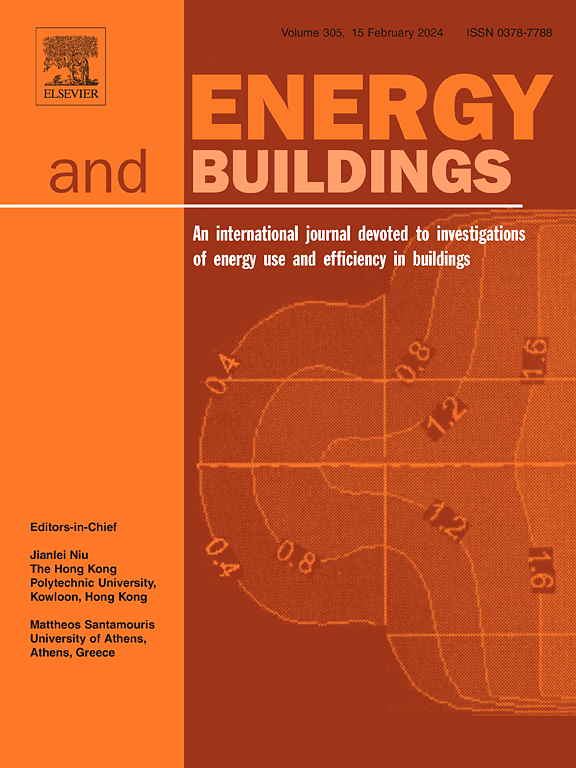Window view clarity evaluation in electrochromic glazings
IF 6.6
2区 工程技术
Q1 CONSTRUCTION & BUILDING TECHNOLOGY
引用次数: 0
Abstract
The Quality of View (QV) through windows significantly impacts human well-being, with view clarity representing a crucial aspect within QV assessments. Electrochromic (EC) windows, capable of dynamically adjusting tint levels to manage light and heat penetration, offer varying degrees of view clarity. Evaluating this clarity is vital for comprehensively understanding how EC windows influence human comfort in architectural settings and also complements the related subjective assessments.
This study introduces a unique approach to assess the clarity of views facilitated by EC windows. Employing advanced image processing techniques, a novel methodology was developed for this purpose, generating 3456 images through the Radiance engine. These images considered multiple factors such as viewpoint, tint level, separate window zones, and time of day for different building orientations. Using the Landolt-C chart as a simulated view target under diverse EC window configurations, the study compared simulated images with a reference image, applying the Saliency Guided Enhanced Structural Similarity algorithm (SG-ESSIM) —an image quality assessment algorithm.
The study’s outcomes underscore the method’s ability to identify optimal EC window configurations, effectively maximising QV. Furthermore, this methodology offers opportunities for integration with subjective clarity assessments and EC window control strategies, supporting a more comprehensive understanding of QV trade-offs in dynamic façade design.
电致变色玻璃的窗视清晰度评价
通过窗户的视野质量(QV)显著影响人类福祉,视野清晰度代表了QV评估中的一个关键方面。电致变色(EC)窗口,能够动态调整色彩水平,以管理光和热的渗透,提供不同程度的视野清晰度。评估这种清晰度对于全面理解EC窗如何影响建筑环境中的人类舒适度至关重要,同时也补充了相关的主观评估。这项研究介绍了一种独特的方法来评估EC窗所促进的视野清晰度。采用先进的图像处理技术,为此目的开发了一种新的方法,通过Radiance引擎生成3456张图像。这些图像考虑了多种因素,如不同建筑朝向的视点、色调水平、单独的窗口区域和一天中的时间。以不同EC窗口配置下的Landolt-C图作为模拟视图目标,应用图像质量评估算法Saliency Guided Enhanced Structural Similarity algorithm (SG-ESSIM),将模拟图像与参考图像进行比较。研究结果强调了该方法识别最佳EC窗口配置的能力,有效地最大化QV。此外,该方法提供了与主观清晰度评估和EC窗口控制策略集成的机会,支持对动态立面设计中QV权衡的更全面理解。
本文章由计算机程序翻译,如有差异,请以英文原文为准。
求助全文
约1分钟内获得全文
求助全文
来源期刊

Energy and Buildings
工程技术-工程:土木
CiteScore
12.70
自引率
11.90%
发文量
863
审稿时长
38 days
期刊介绍:
An international journal devoted to investigations of energy use and efficiency in buildings
Energy and Buildings is an international journal publishing articles with explicit links to energy use in buildings. The aim is to present new research results, and new proven practice aimed at reducing the energy needs of a building and improving indoor environment quality.
 求助内容:
求助内容: 应助结果提醒方式:
应助结果提醒方式:


